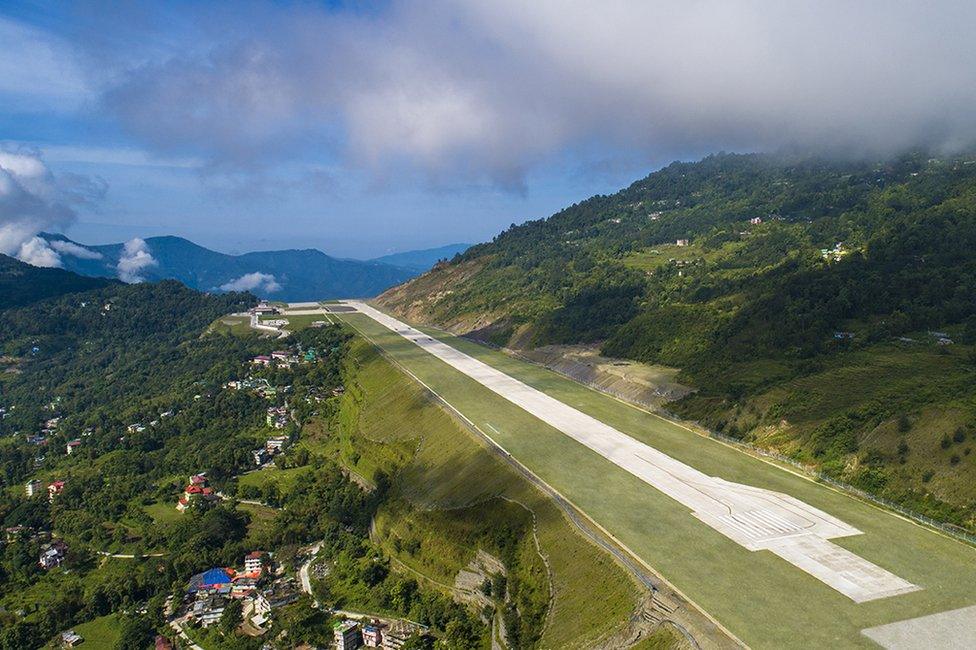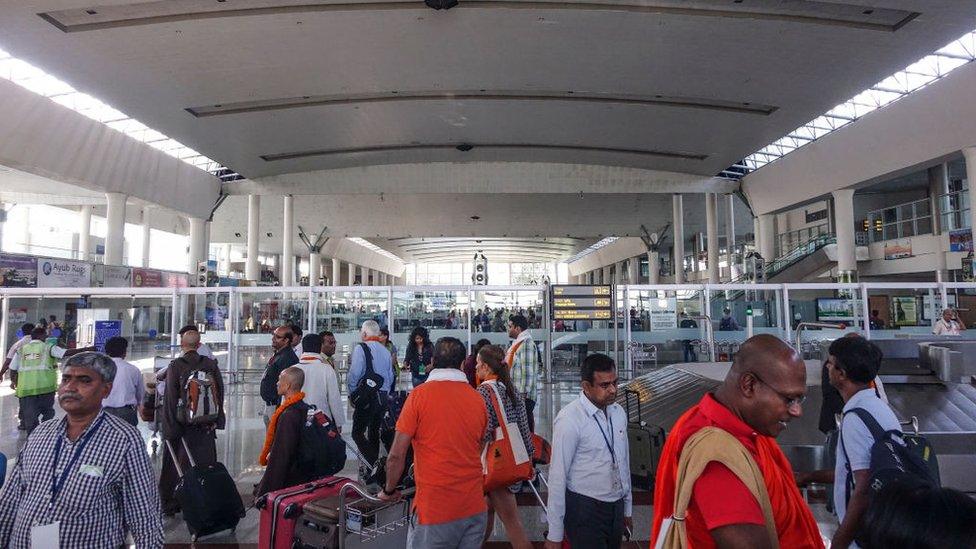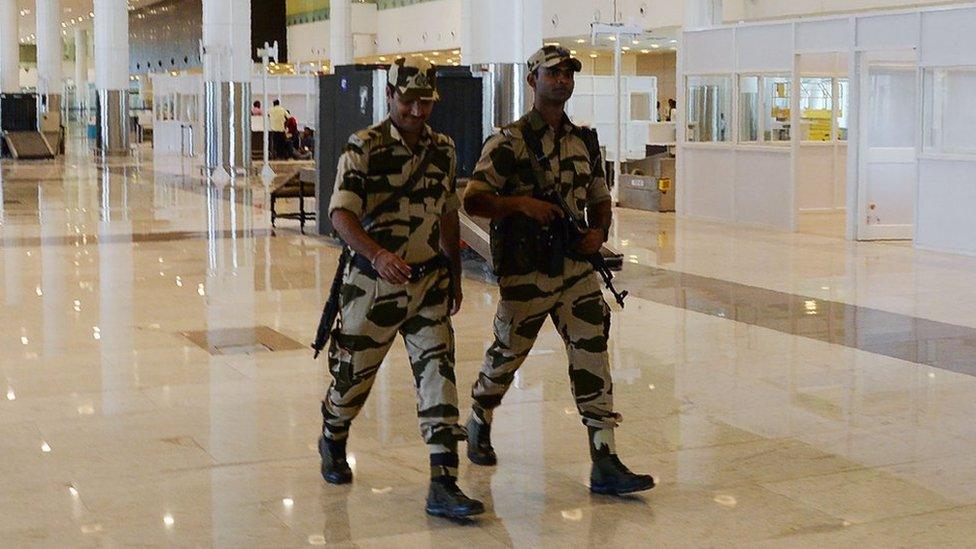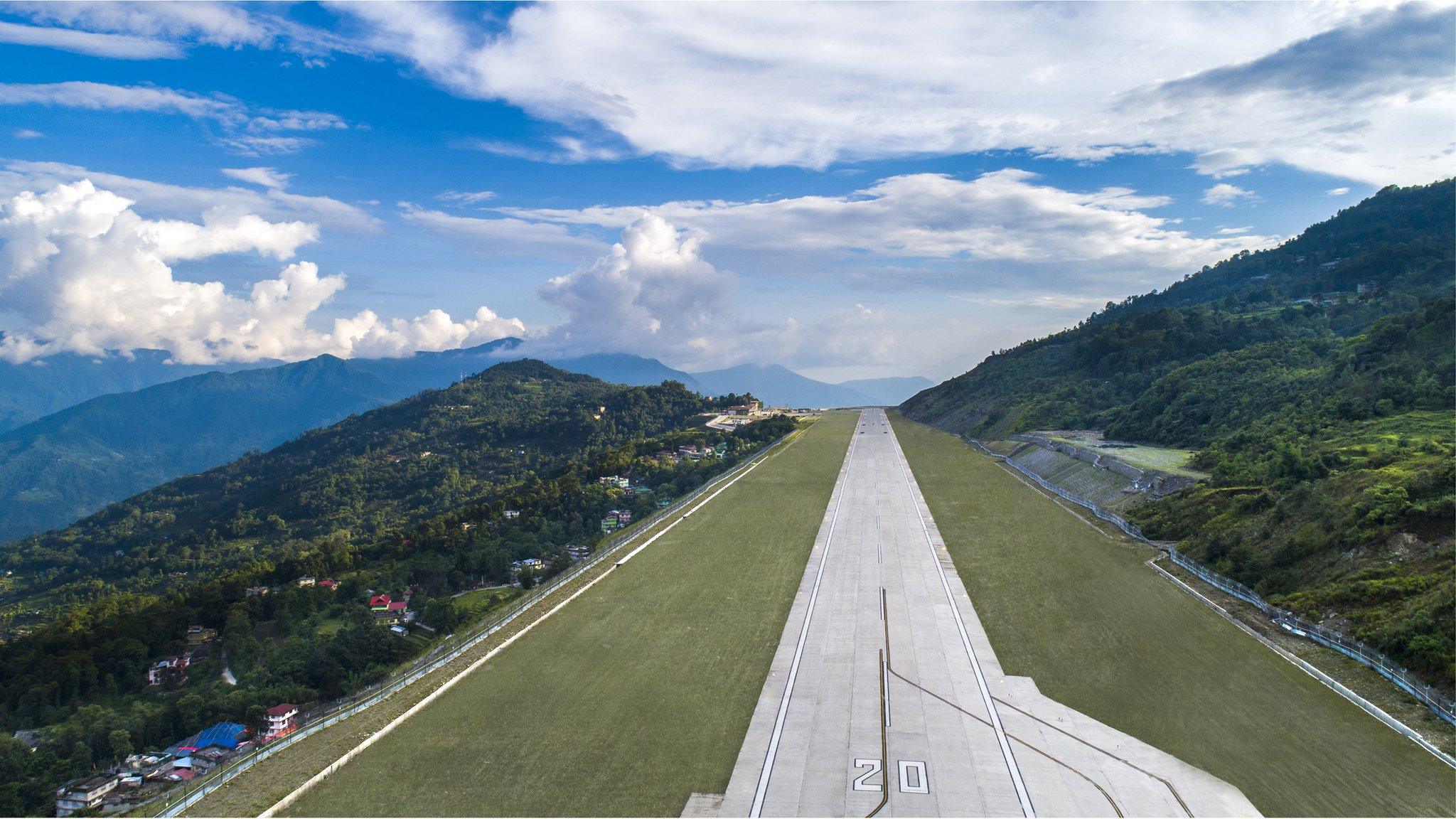India election 2019: How many new airports have been built?
- Published

Opening up air travel for the growing numbers of Indians who want to fly has been a promise of the current government since it came to power in 2014.
It has rolled out an ambitious project to extend regional air networks to connect underserved destinations to the major cities.
The ruling BJP says its efforts have shown results, declaring that the number of airports operating in India has increased significantly.
In the run-up to the Indian election, which gets under way on 11 April, BBC Reality Check is examining claims and pledges made by the main political parties.

Claim: The ruling BJP party says it has increased the number of operational airports in India from 65 in 2014 to 102 by this year.
It also claims that in 2017, more than 100 million passengers flew on domestic routes - and for the first time, more people travelled by air than in air-conditioned train compartments.
Allow X content?
This article contains content provided by X. We ask for your permission before anything is loaded, as they may be using cookies and other technologies. You may want to read X’s cookie policy, external and privacy policy, external before accepting. To view this content choose ‘accept and continue’.
Verdict: The data - from both government and aviation authorities - does point to more airports since 2014. But the exact number differs according to which source you use.
The claims about air passenger numbers are true.

How many airports?
In February, the ruling BJP referred to 102 operational airports in a social media posting - saying this was up from 65 in 2014, when it came to power.
There are several sources for official data - but they do not match.
The Airports Authority of India, which is responsible for civil infrastructure, identifies 68 operational airports in 2013-14.
By March 2018, it reported that there were 129 airports - but did not say how many were operational.
A government statement in parliament in July 2018 said 101 were operational.
India's Directorate General of Civil Aviation (DGCA) - the body that regulates civil aviation - has the following figures:
In March 2015, there was a total of 97 airports operating
By March 2018, this had gone up to 109
Its website does not have airport numbers for 2014.
It is worth adding that the Congress party-led government - in power from 2009 to 2014 - told parliament that as many as 90 airports were operational by February 2014, a higher figure than that given by the BJP.

The new airport in Sikkim state in India
And the annual report of the Ministry of Civil Aviation for the same year mentions 94 operational airports.
So if you take these figures, the increase in new airports under the BJP looks less dramatic.

Read more from Reality Check

How many passengers?
What about the BJP claim that more than 100 million passengers flew on domestic routes in 2017, and in that year more people travelled by air than in air-conditioned train compartments?

A statement in parliament last year said that the total number of passengers on scheduled domestic routes was 103.75 million for the fiscal year 2016-17.
And the DGCA figures show that there were already nearly 100 million passengers carried on domestic routes during the calendar year of 2016.

India will need more airport infrastructure to cope with growing demand
So did more passengers travel by air than by the most expensive class of rail travel in 2017 - air conditioned (AC) coach?
According to the annual report of Indian railways in 2016-17, the number of AC coach passengers that year was about 145.5 million.
The DGCA says there were a total of 158.43 million passengers on both domestic and international air routes in India in 2017, surpassing those using AC train carriages.
Stiff competition between domestic airlines in recent years has pushed down the cost of flights to a level now comparable with AC rail travel, and of course it's much faster.
However, many more millions continue to use cheaper forms of rail travel.


- Published9 October 2018

- Published24 September 2018
